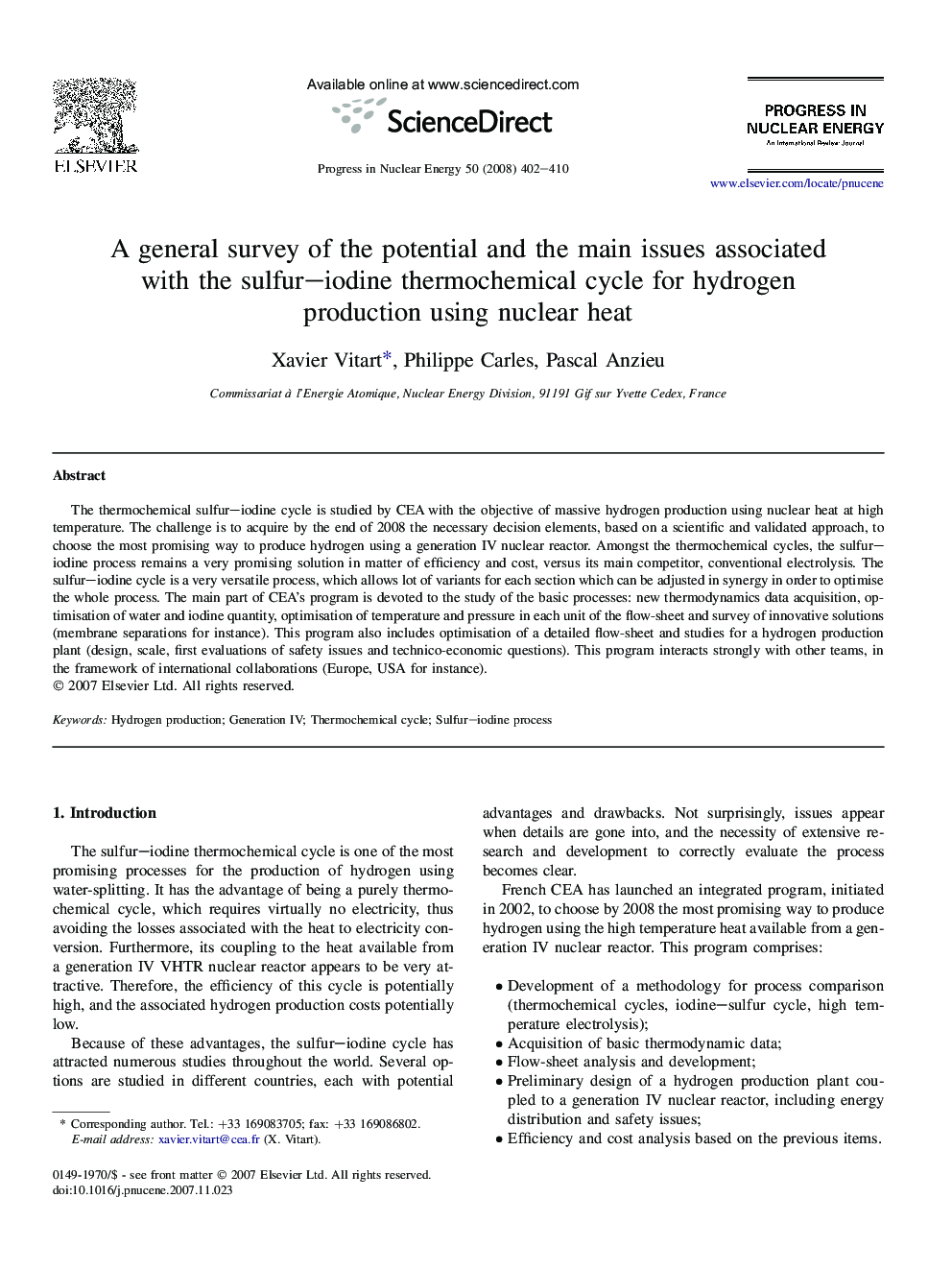| Article ID | Journal | Published Year | Pages | File Type |
|---|---|---|---|---|
| 1741675 | Progress in Nuclear Energy | 2008 | 9 Pages |
The thermochemical sulfur–iodine cycle is studied by CEA with the objective of massive hydrogen production using nuclear heat at high temperature. The challenge is to acquire by the end of 2008 the necessary decision elements, based on a scientific and validated approach, to choose the most promising way to produce hydrogen using a generation IV nuclear reactor. Amongst the thermochemical cycles, the sulfur–iodine process remains a very promising solution in matter of efficiency and cost, versus its main competitor, conventional electrolysis. The sulfur–iodine cycle is a very versatile process, which allows lot of variants for each section which can be adjusted in synergy in order to optimise the whole process. The main part of CEA's program is devoted to the study of the basic processes: new thermodynamics data acquisition, optimisation of water and iodine quantity, optimisation of temperature and pressure in each unit of the flow-sheet and survey of innovative solutions (membrane separations for instance). This program also includes optimisation of a detailed flow-sheet and studies for a hydrogen production plant (design, scale, first evaluations of safety issues and technico-economic questions). This program interacts strongly with other teams, in the framework of international collaborations (Europe, USA for instance).
